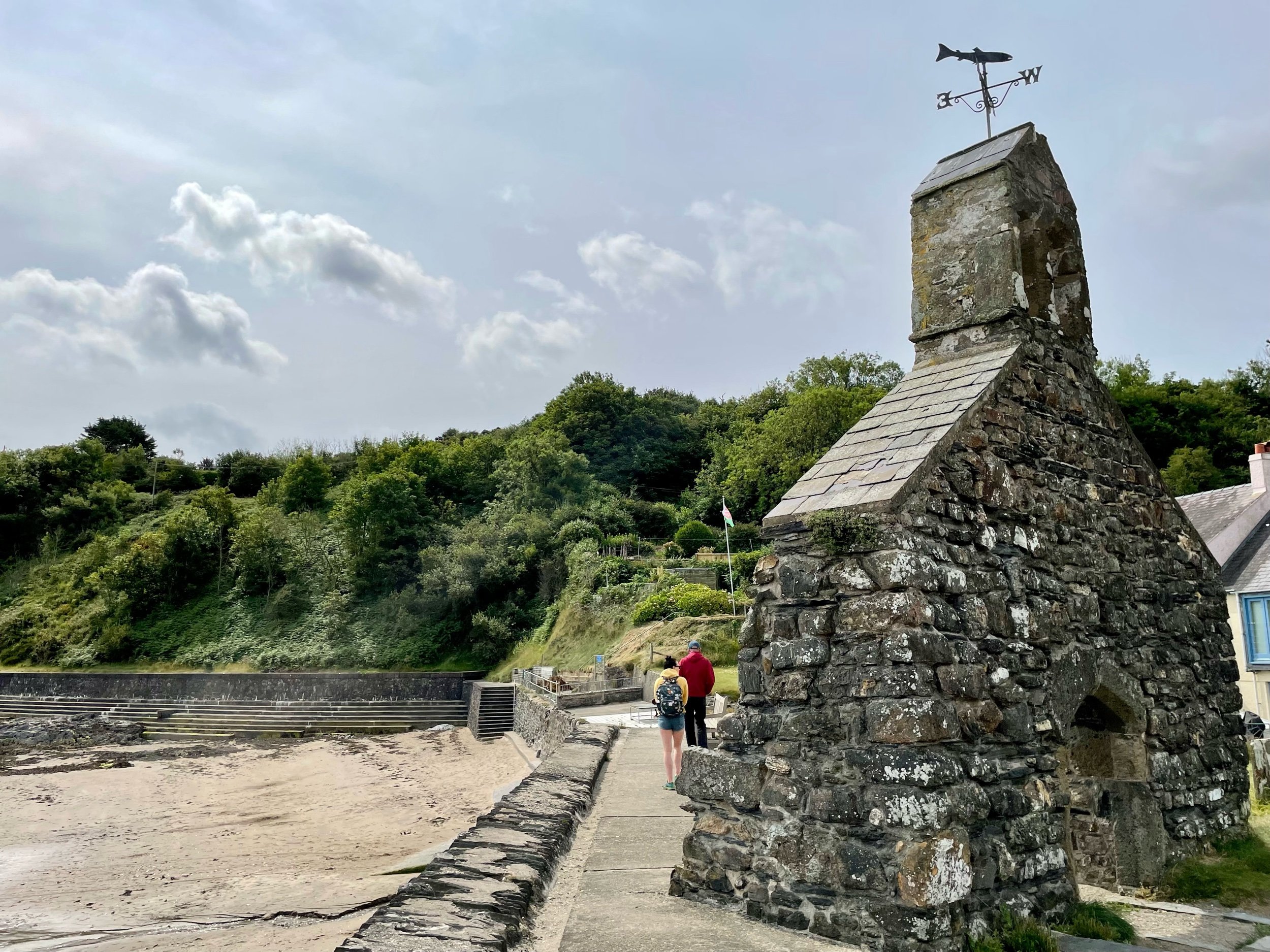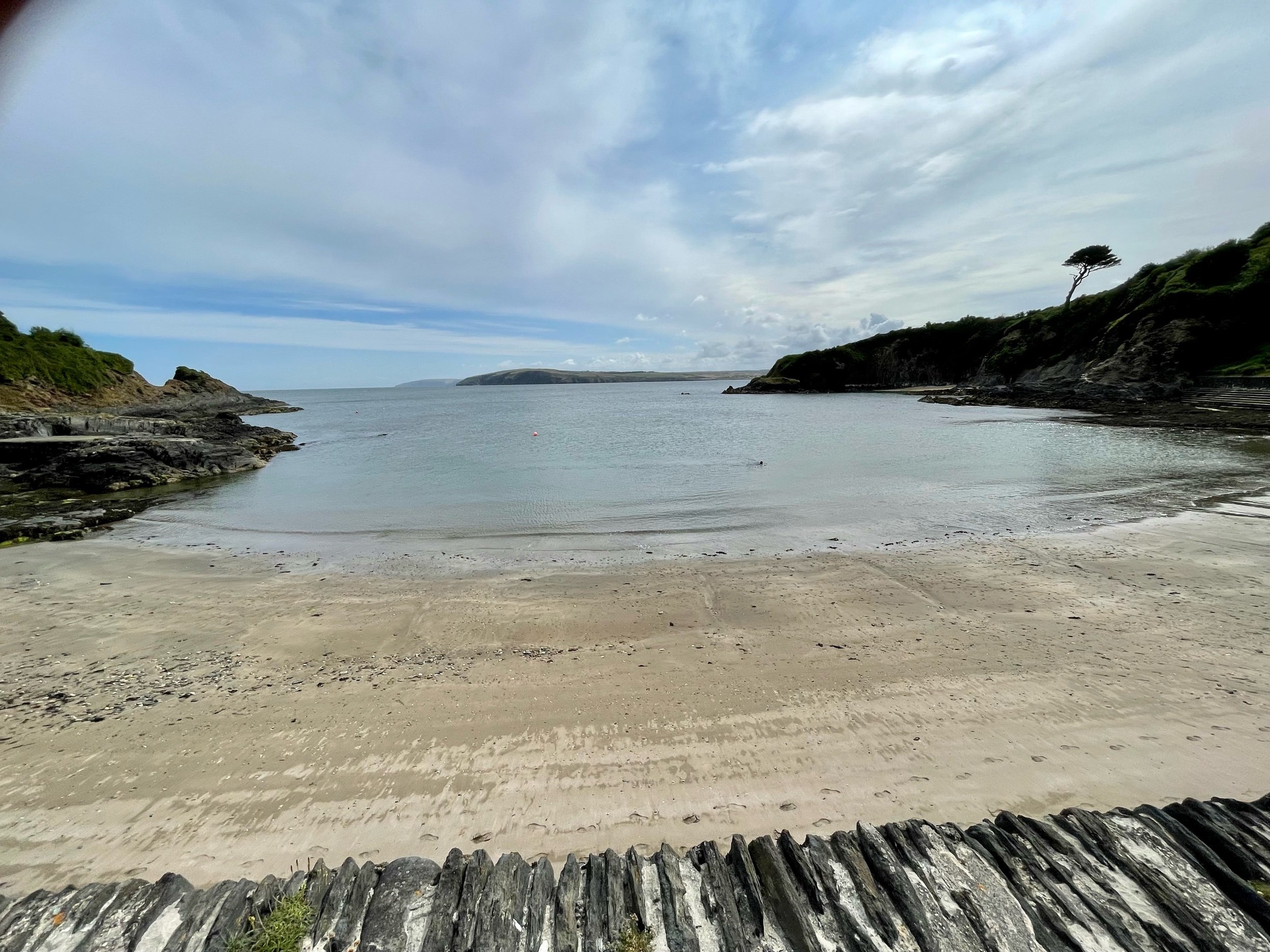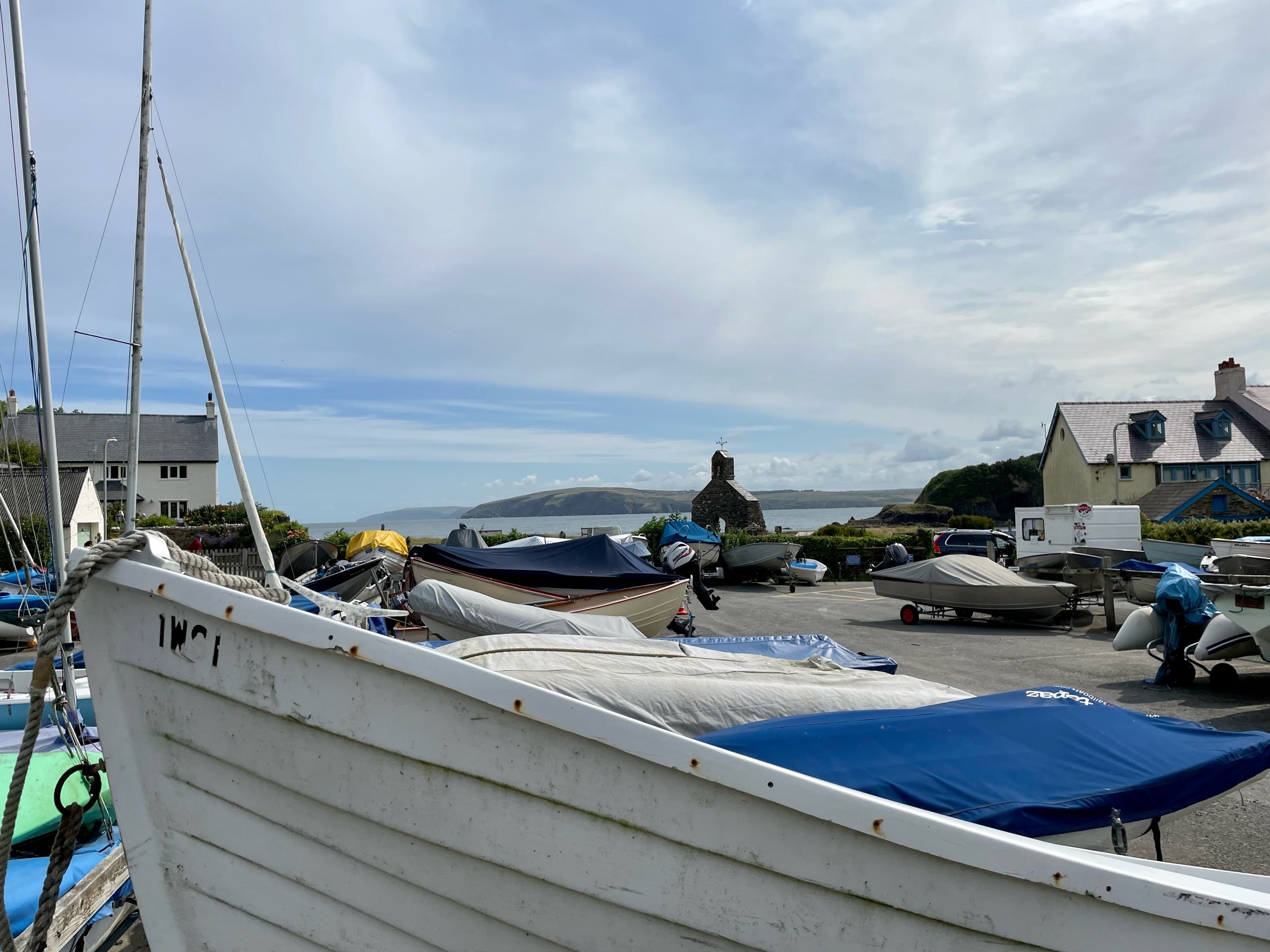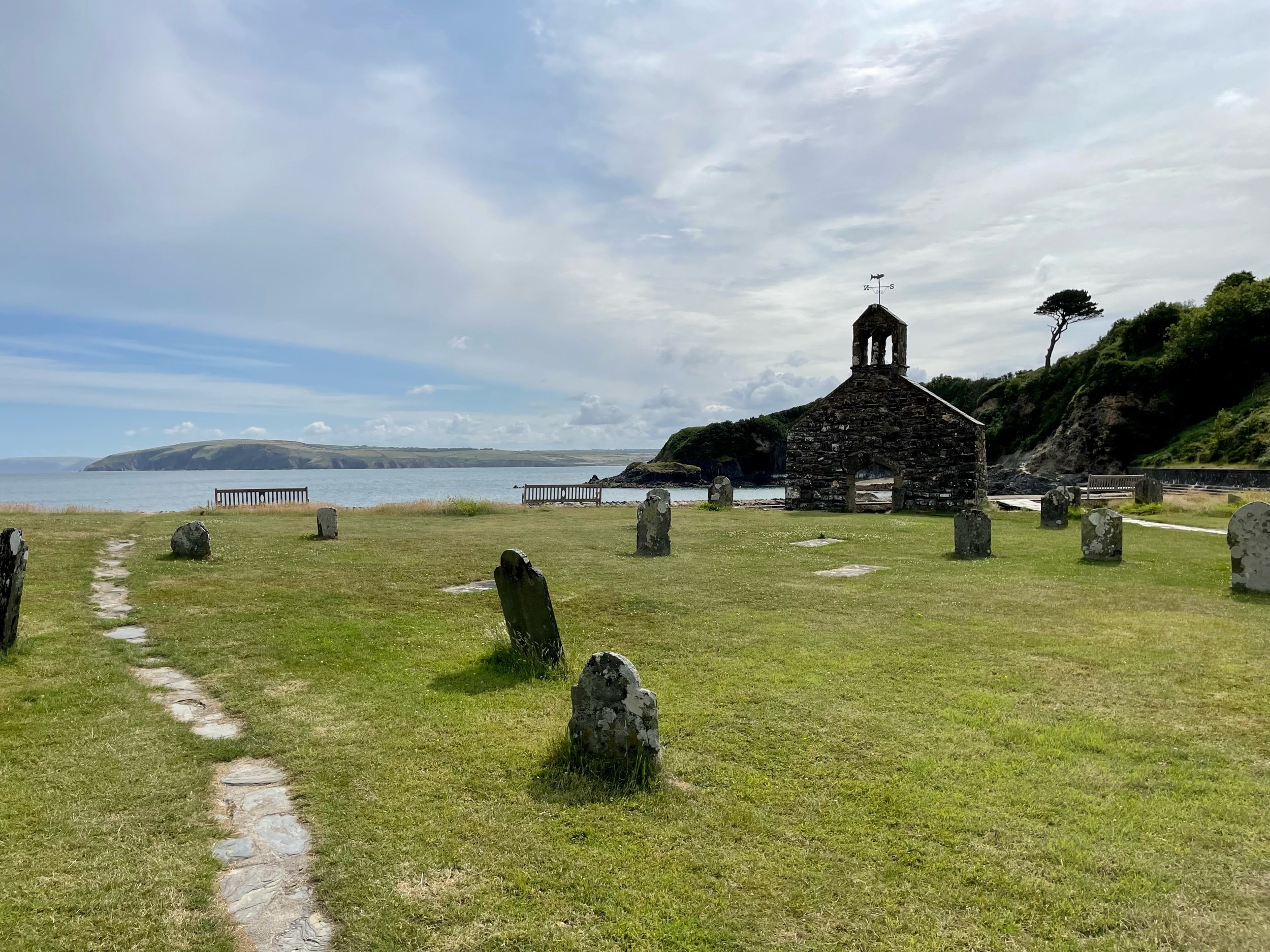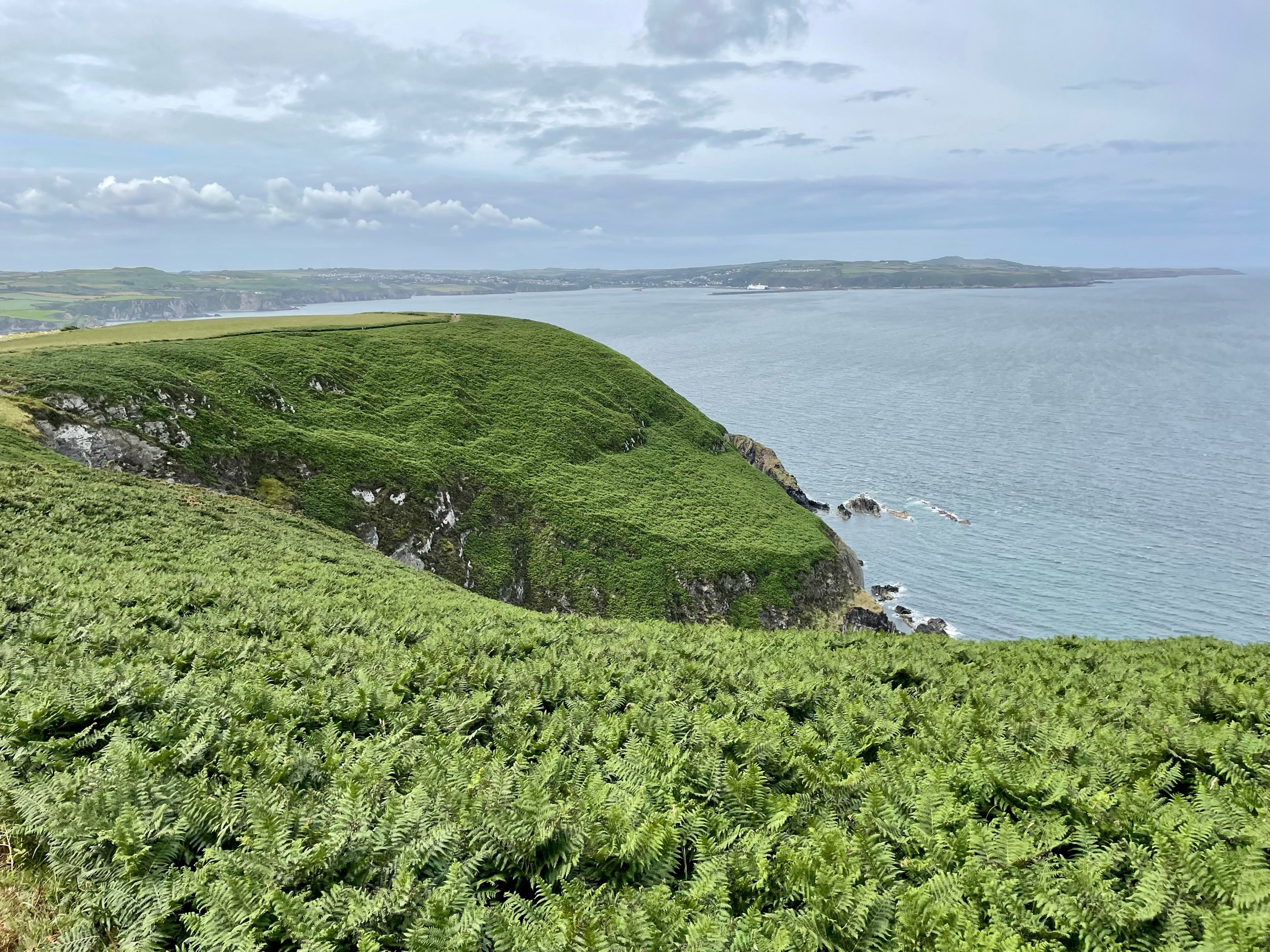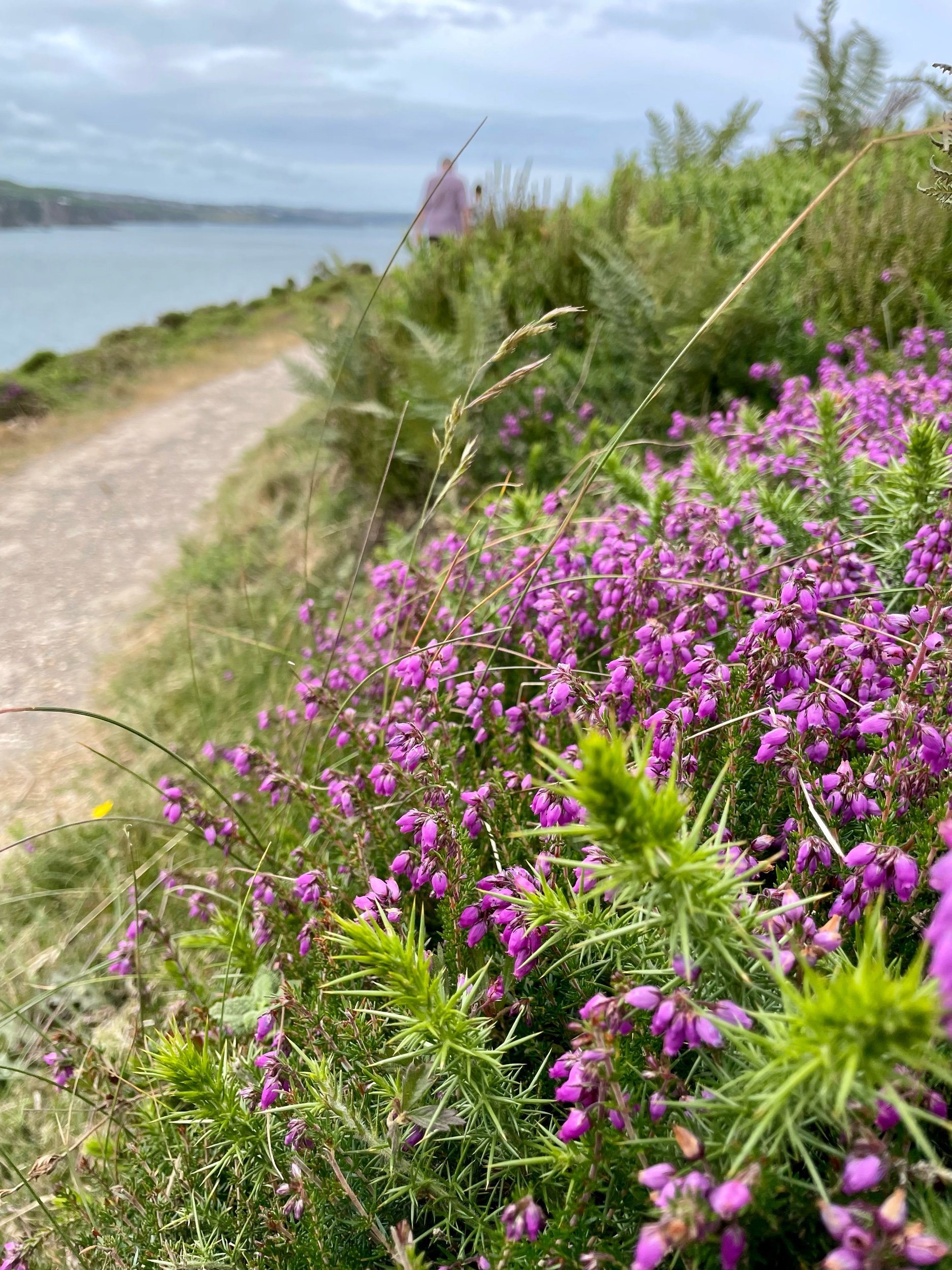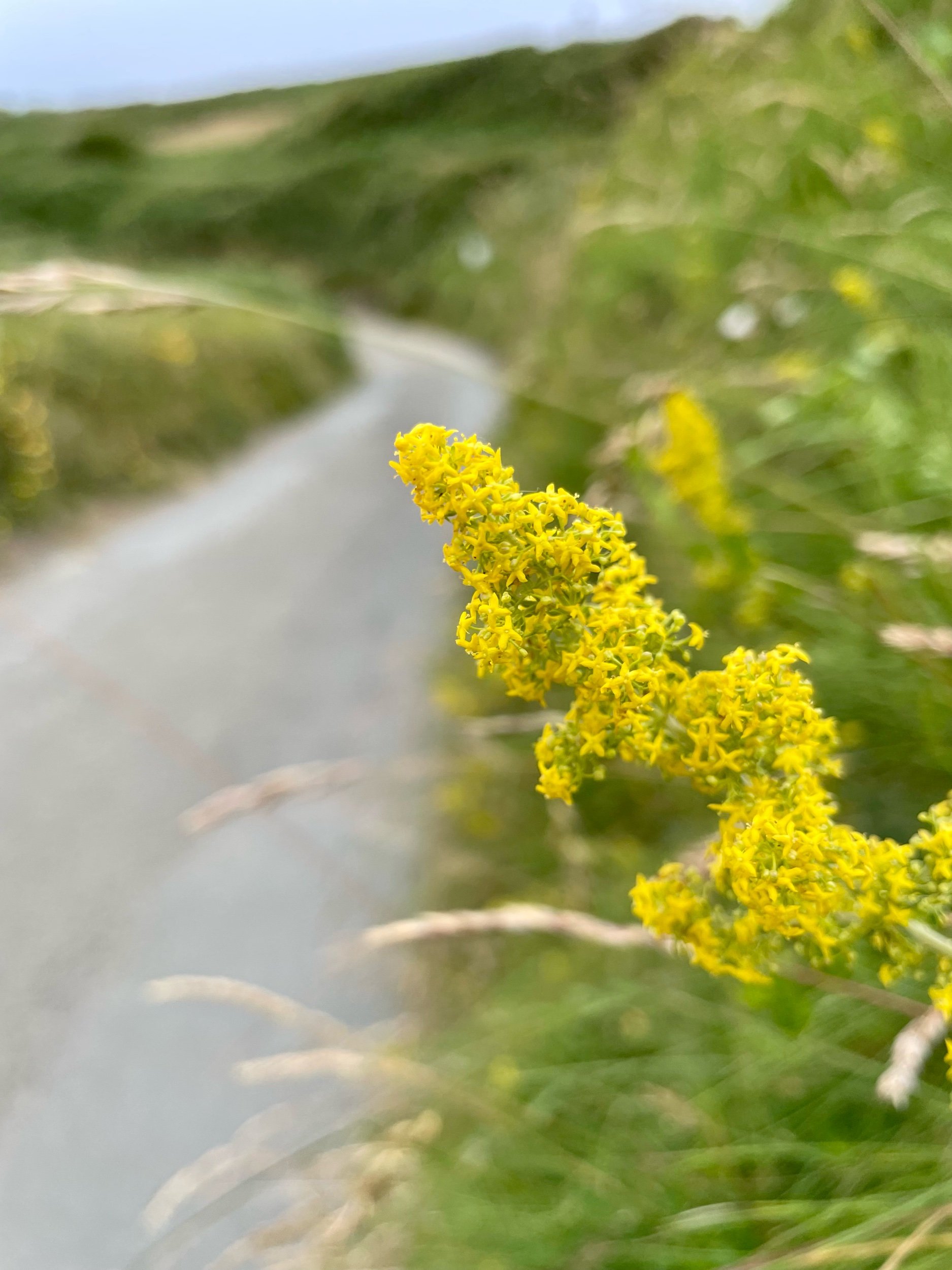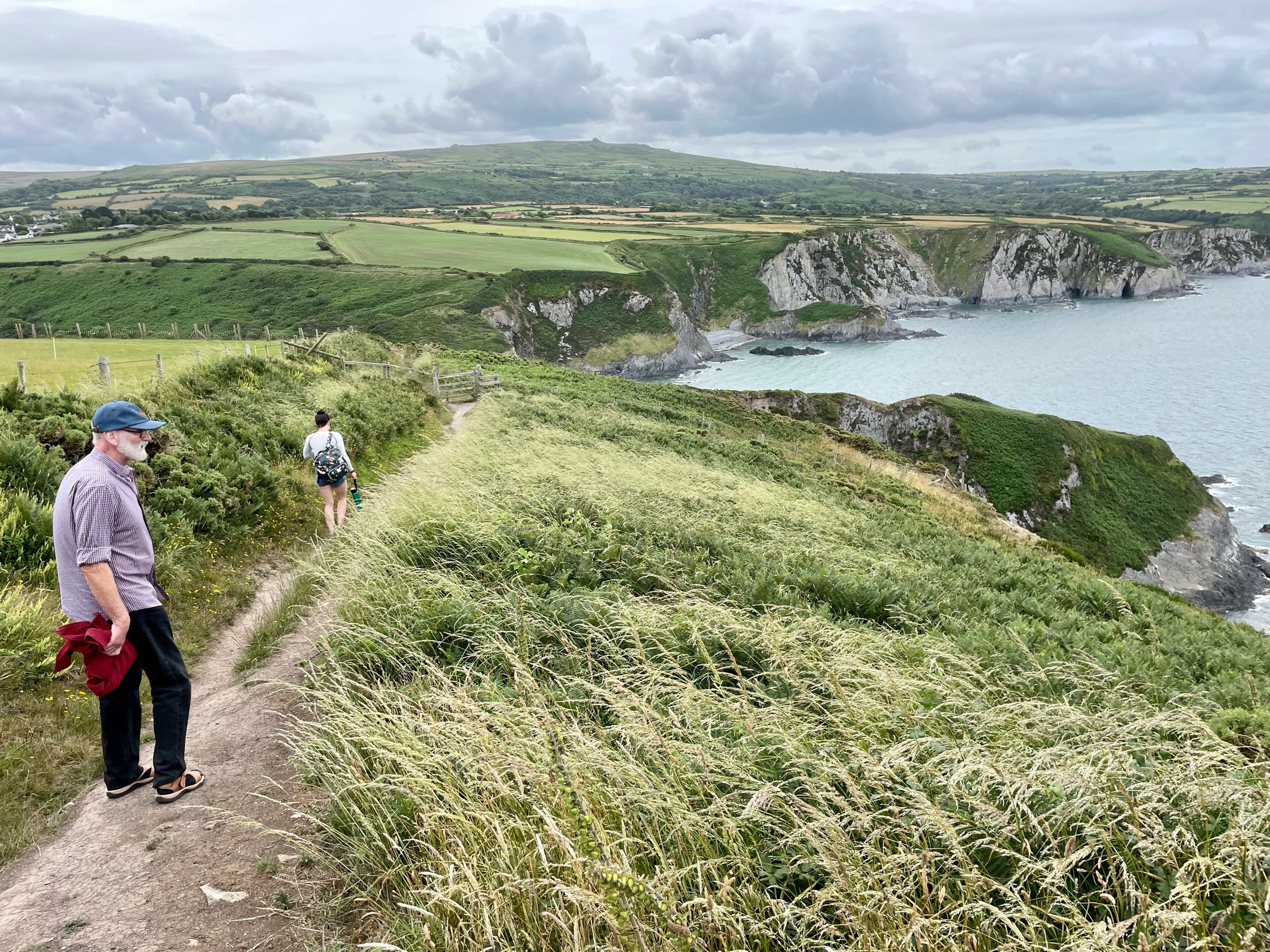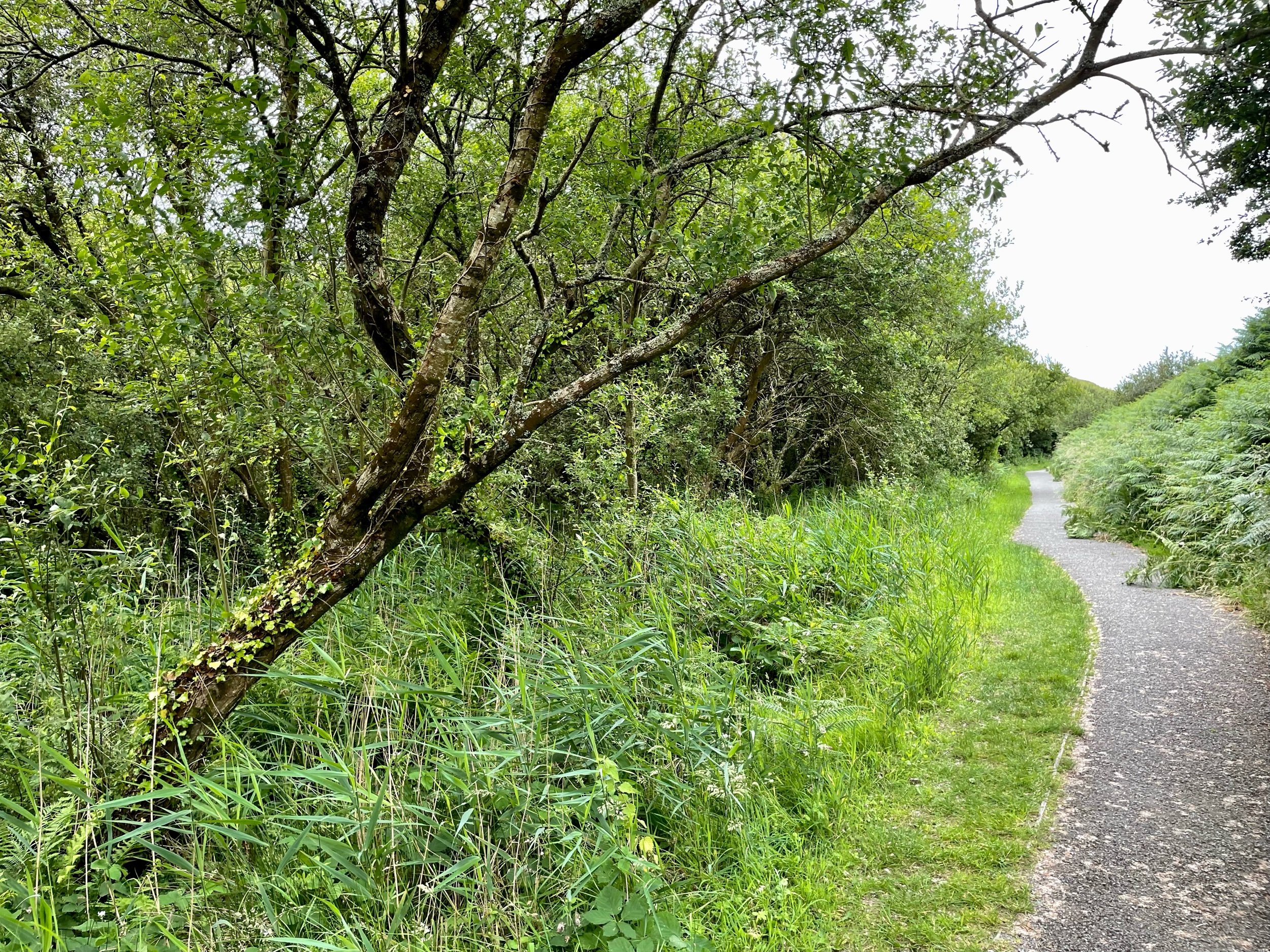A short but stunning walk around the coastline of Dinas Head following the Wales Coast Path, with great views out to sea and of nesting seabirds, before returning via a flat, tarmac path through sheltered woodland.
Activity type: Walk (but it would also make a fun trail run)
Distance: 3 miles approximately
Elevation: 169 metres (554 feet) of climbing (see Strava elevation for full profile)
Accessibility: No styles, some sections are reasonably steep and have steps (see walk notes at the end for more info.)
Route type: Circular
Start/finish point: Car park at Cwm-yr-Eglwys, Pembrokeshire.
The steep road narrowed as we drove down into Cwm-yr-Eglwys, meaning Valley Church. The lane felt even more claustrophobic driving in late June as the hedgerow greenery leaned inwards until it touched the van on both sides. It reminded me a little of watching those Tour de France cyclists riding through an ever-narrowing tunnel of bodies on their exhausting Alpine ascents.
It was early on a Monday morning, still term time, so the car park was almost empty except for one or two cars. As soon as we stepped outside, two things immediately came to our attention, a cold wind whipping off the sea and what looked like some sort of monument. Or was it a church or chapel of some kind?
We donned a few extra layers – a shock to the system after such a warm day the day before – and dressed Lennie in his colourful new raincoat. Wandering past the inland boatyard with its small dinghies and the odd sailboat, the wind brought the familiar sounds of rippling cloth and the gentle clanging of buoy bells.
Behind the boats, a gate led us through into a graveyard and what was obviously then the remains of a small church, now just a single wall topped with a tiny belltower and weather vane. An information board informed us that this had once been St Brynach’s, a 12th-century church, but two storms in the mid-19th century had washed away firstly much of the graveyard and then, in the great Charter Storm of 1859, most of the church as well. Just a few feet beyond the church, a small stone wall separated it from a fabulous little beach, benches offering a tranquil spot to sit and stare out to sea from the tiny, rocky cove.
The scene was beautiful but also tinged with sadness, and the cold wind whipping in was a reminder that on worse days this narrow inlet would, and clearly had, acted as a funnel through which the wild weather reached the shore.
Reading up about the village, it seems many villagers abandoned the place after the great storm. In more recent times, the desire for holiday homes in picturesque spots such as this meant that only one or two of the houses were now owned by people who lived there. For all its sadness and challenges, it remained a place of unquestionable beauty.
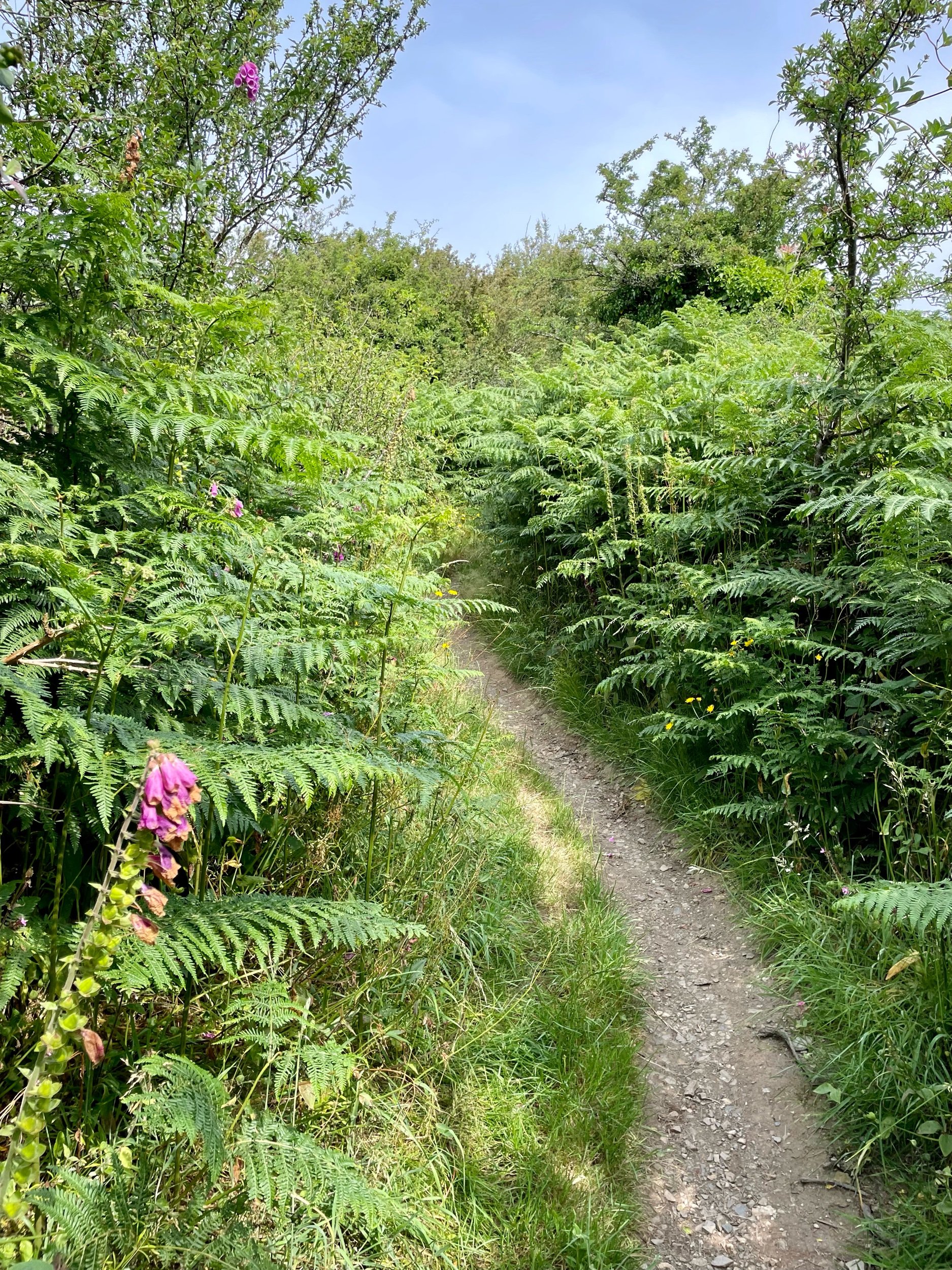
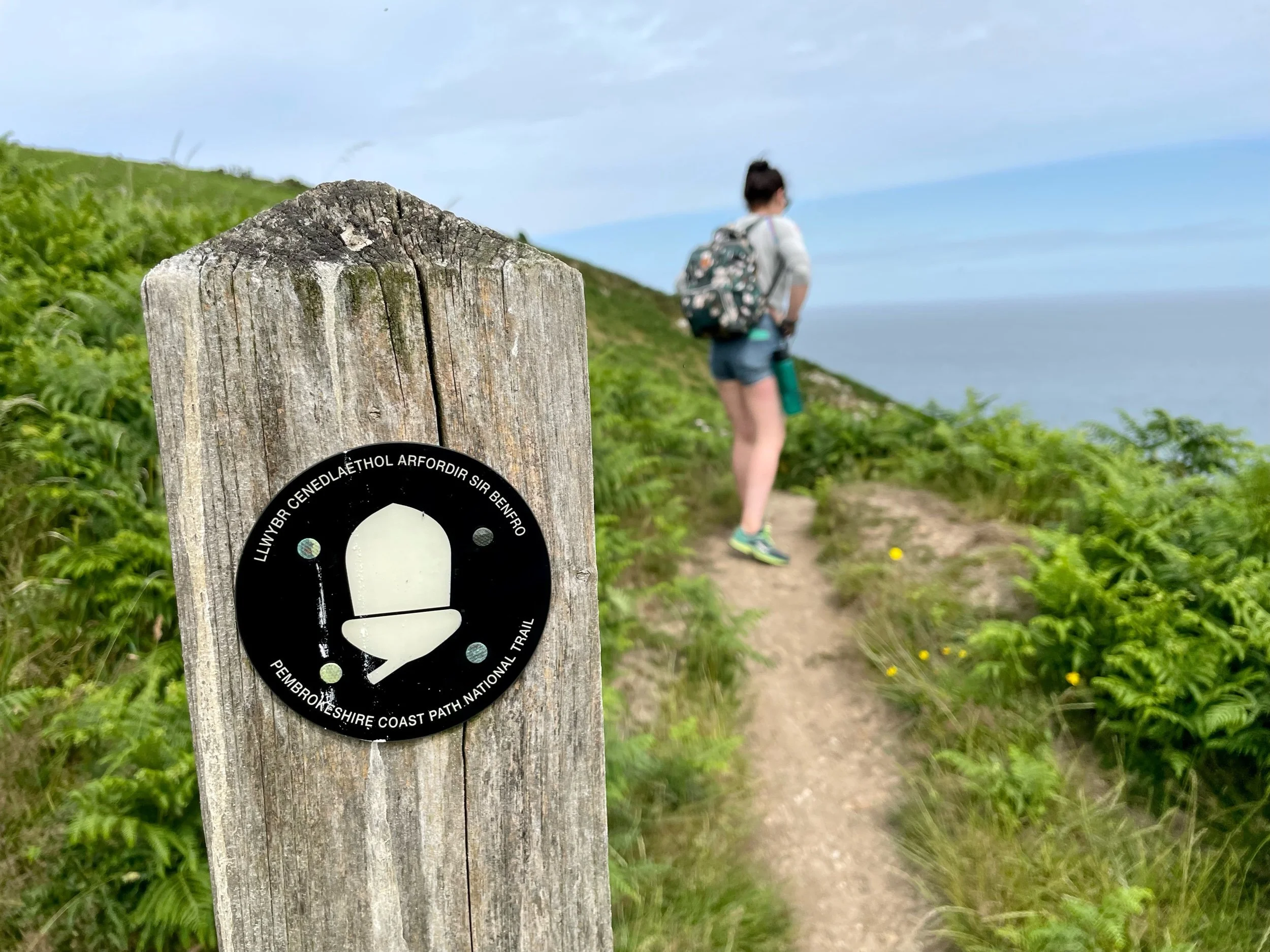
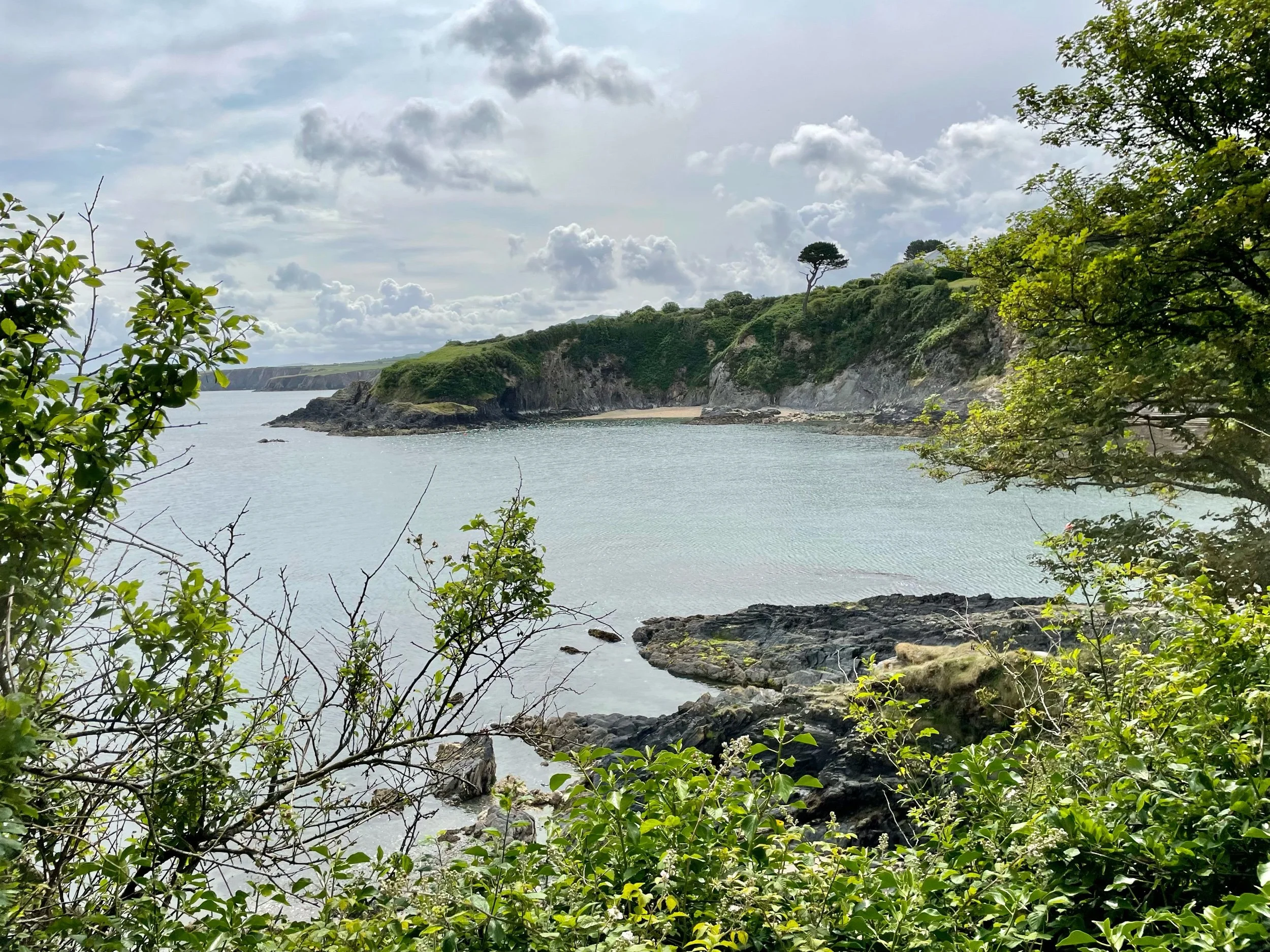


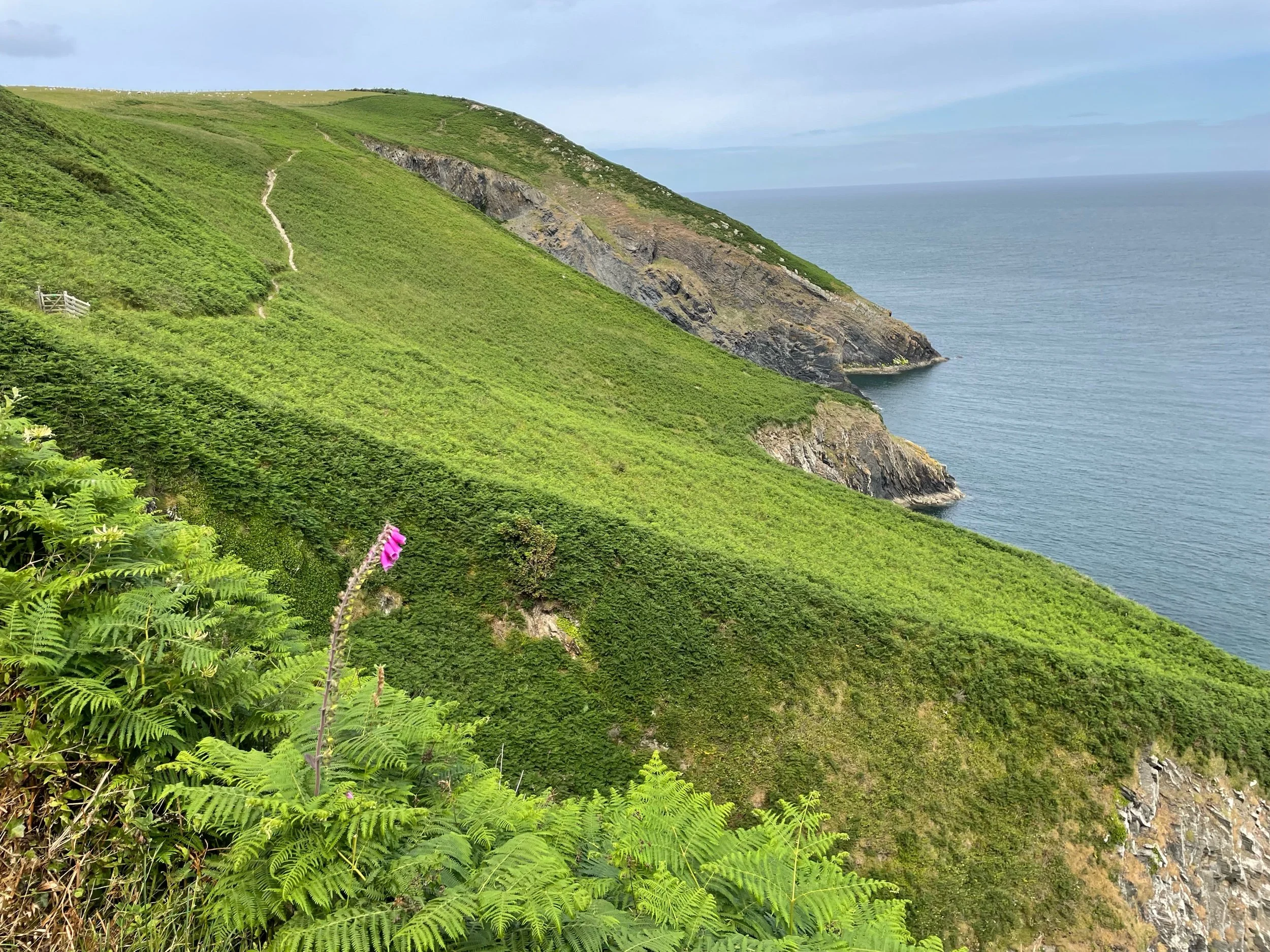
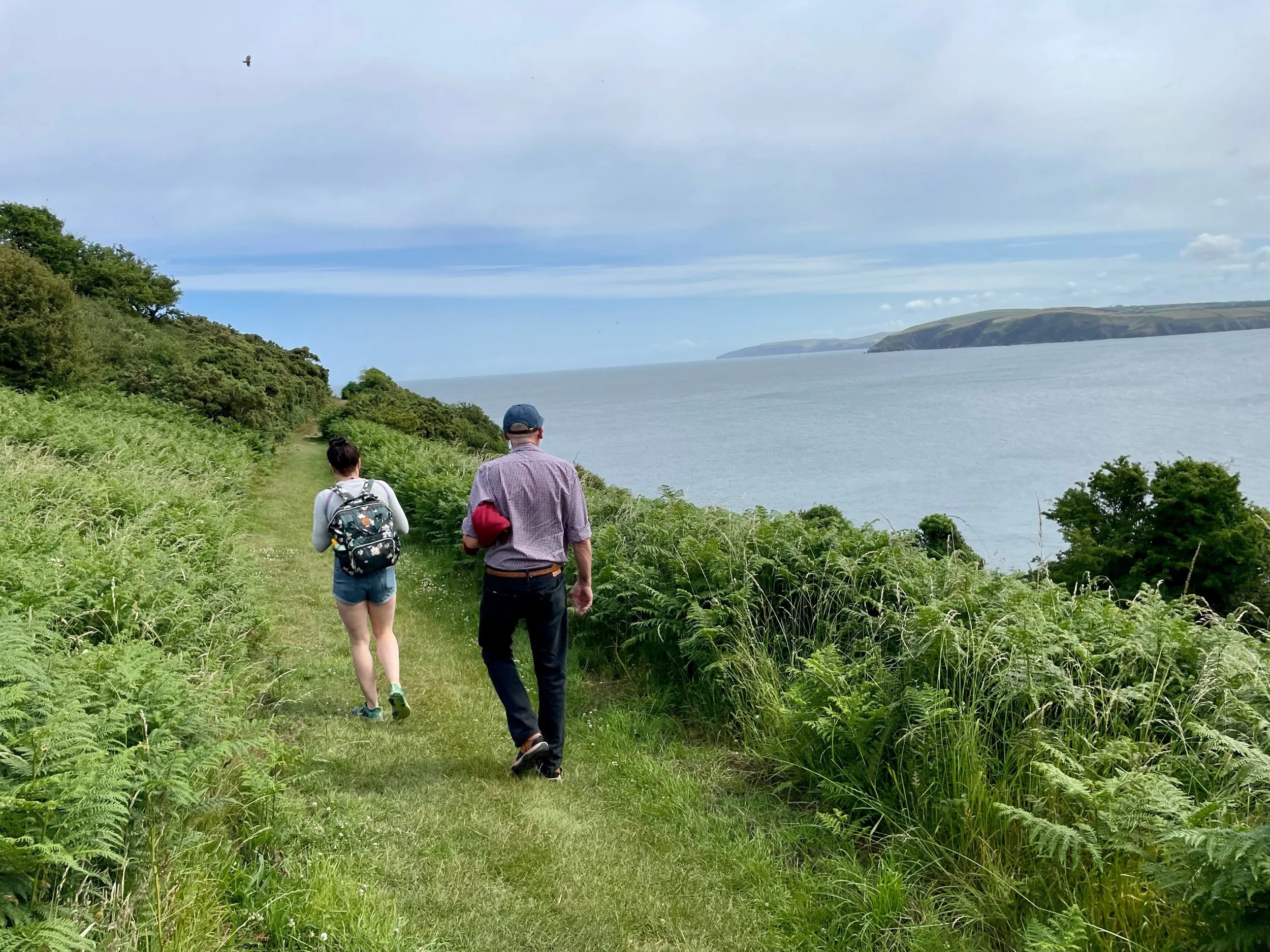
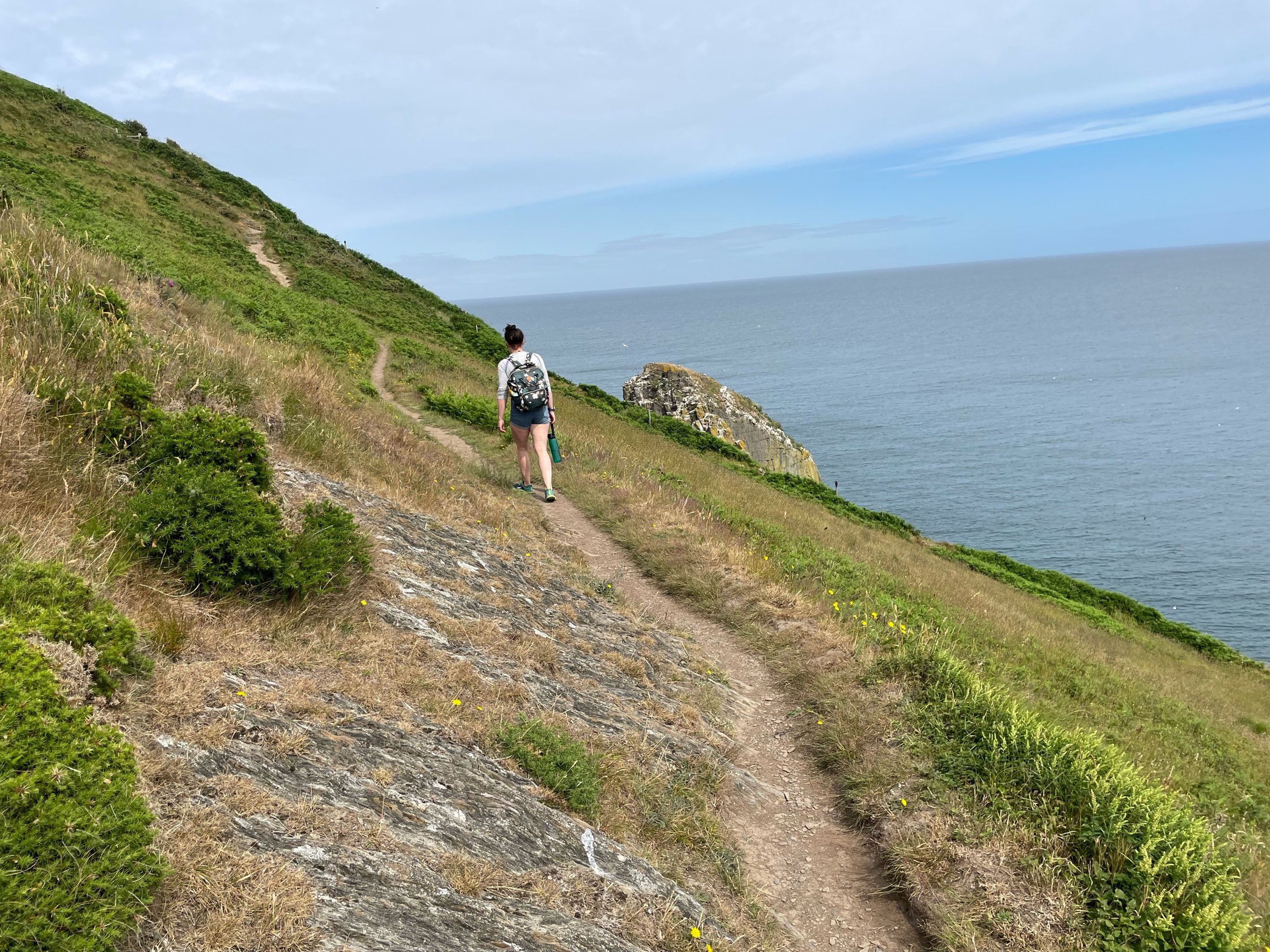
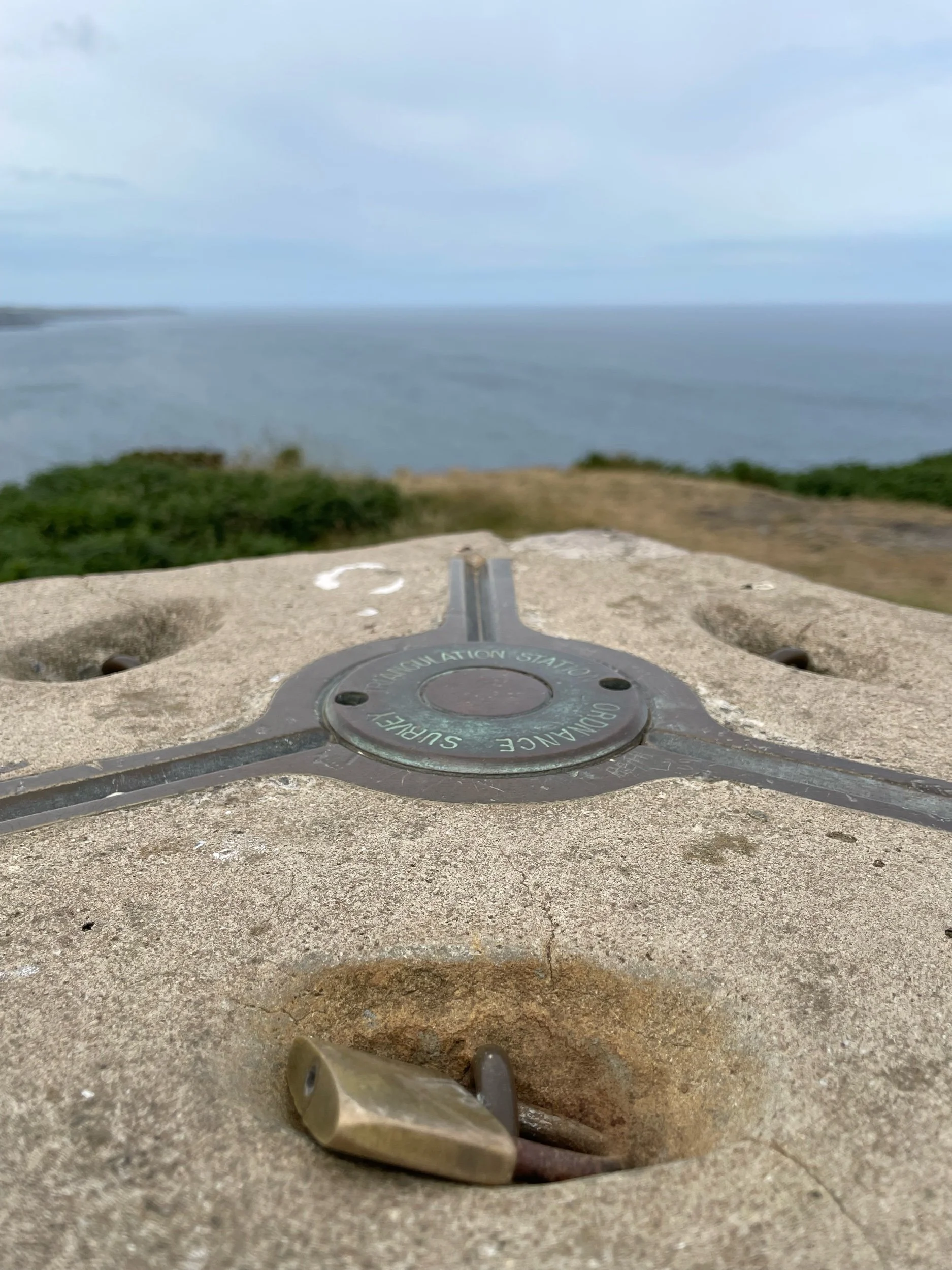
After exploring the church ruins, it was time to get going. The route was a fairly easy one, taking the Wales Coast Path up and all the way around the headland. All we need to do was look for the familiar acorn signs that you’ll find on all national trails and walk.
The climb started instantly as we left the village, weaving our way up through a sheltered gully with ferns higher than our heads lining the path on either side. Out of the wind and climbing continuously, we were soon too warm and the extra layers were quickly shed. Through gaps in the greenery we were treated to great views out beyond the cove to tiny, inaccessible beaches, the cliffs of the coastline snaking in and out into the distance, and beyond to the rugged hilltops of the Preseli Hills.
The climb was definitely worth it though. A few minutes later, we were up on open heathland, the ferns up here a more normal height, fronds tickling your kneecaps as you brushed by. From here we had a panoramic view out to sea and along the coastline. The path clung to the side of the hills and cliffs, although it looked as if it may have been moved inland once or twice over the years as the wind and salt water had satiated its appetite for land, nibbling its way steadily into Wales.
A little way along, Needle Rock towered upwards just a few metres out to sea. The stack was inhabited by thousands of nesting gulls and black and white sea birds, possibly razorbills or guillemots. A lack of binoculars and ornithology skills means I can’t confirm which. It could well have been both. The noise was deafening, the seabirds cackling like a coven of witches as we trod the path carefully towards the rock.
The birds nesting and chatting up on Needle Rock.
Past Needle Rock, the path continued to climb until we reached the summit and the furthest point of the headland at Pen y Fan. At 142 metres it’s not quite as high as its famous mountain cousin of the same name in the Brecon Beacons (now known by their traditional Welsh name, Bannau Brycheiniog), but it still offers fantastic views eastwards back towards Needle Rock, which now, from above, looks more like a tiny pimple, and west across Fishguard Bay to its eponymous ferry port. (Pen y Fan, by the way, means something along the lines of ‘top of this place’, hence why you’ll find quite a few of them around Wales.)
The descent to Pwllgaelod began gently but became steeper as the path wore down into the earth until we were walking on the jagged bedrock. An array of flowers added colour to the journey, thrift; vetch; scabious; clover; heather; and plenty more I didn’t know.
Pwllgwaelod is another cracking little cove with a great beach, pub/cafe and toilets if you fancy some refreshments after your efforts. From here, it’s a short and easy walk back along a flat, tarmac path that tucks behind Dinas Island through an ancient wet woodland. I wondered if this marshy area was once much wetter and effectively cut off the headland, making it an island of sorts, hence its often-used alternative name.
We were soon back in Cwm-yr-Eglwys, completing the circle feeling satisfied but peckish, so we jumped in the van and headed up the coast into Cardigan to find some lunch. By the time we returned, the car park was full, proving that, even outside of holiday time, the early bird catches the parking space.
Walk notes
The road down to Cwm-yr-Eglwys is steep and very narrow. Parking was £5 via an honesty box but there were public toilets and what looked like a little kiosk that might sell drinks and ice creams. It was closed when we were there though. Having researched a little more since our walk, it appears that the car park at Pwllgwaelod on the other side of the headland is currently free of charge. With the toilets and pub/cafe, you might find it much better to start the loop from that side and finish with some well-earned refreshments.
The path is steep and with several steps out of Cwm-yr-Eglwys. Up on the headland, it gets narrow in sections with some big drops off the cliff edge, so care is required. Sections on the other side of the headland to/from Pwllgwaelod are also steep and uneven in parts.



